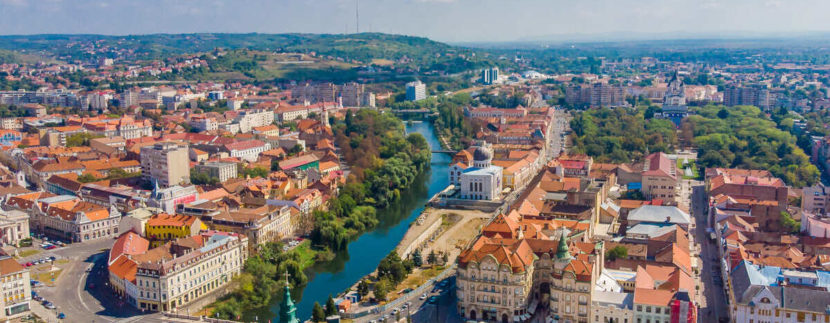Why This European Destination Is Growing With Digital Nomads And Remote Workers

[ad_1]
Last Updated
Drawn to Europe’s rich diversity, safety, and facilitated cross-border links, digital nomads and remote workers are moving to the continent in droves in search of that laid-back European lifestyle.

While it’s hard to measure which destinations have witnessed the biggest spike in nomadic residents, the category has made it clear that when it comes to ‘workations’, their preference lies with the seriously underrated East.
Taking into account its affordability, boundless cultural wealth, and friendliness to foreigners, it’s no surprise Romania continues to surge in popularity in the nomad scene:
Romania Is One Of Europe’s Leading Nomad Hubs Right Now

Romania was once one of Eastern Europe’s most overlooked countries, but it’s finally getting the recognition it deserves, if not as a traditional tourist destination, then as a burgeoning digital nomad hub, mentioned not one, but four times on the latest Workation Index published by HomeToGo.
The index, which ranks over 150 European cities based on their attractiveness to digital nomads, features four Romanian cities in acknowledgment of its large number of coworking spaces per capita, internet speed, cultural wealth and attractions, daylight hours, and accommodation prices.
The Four Best Destinations For Digital Nomads In Romania
Top 5 Travel Insurance Plans For 2023 Starting At $10 Per Week

The highest-peaking Romanian entry, Cluj-Napoca is one of the country’s largest cities and the unofficial capital of the historical region known as Transylvania. Its numerous work-friendly cafes, city parks, Gothic spires, and medieval heritage earn it a number 17 spot on the ranking.
In the subcategories, Cluj has the best vacation rental price, with a score of 9.66 out of 10, daylight (8.70) and internet speed (7.50), though it is trailed closely by Bucharest, the Romanian capital and its second highest entry on the list, with similar results.

Due to its busy nightlife, wider availability of services, and cosmopolitan feel, Bucharest might appeal to big-city lovers. It also has one specialty cafe per 52,000 inhabitants, more than Berlin in Germany (1 per 67,000 inhabitants), and Copenhagen (1 per 72,000 inhabitants), as reported by European Coffee Trip.
Constanța lines the Black Sea and is third best on the overall ranking, appearing at number 33rd and offering scenic beaches and a more relaxed atmosphere. A forgotten gem of the bygone Austrian-Hungarian Empire, Timisoara is the fourth and last Romanian city to make the list, at number 81.

How Cheap Is Romania To Actually Live In?
Romania is hugely affordable by Western European standards, which explains its popularity boom among budget-conscious nomads. A married couple is expected to spend 8,374.28 Romanian Leu, or roughly USD $1,867.72, covering all expenses monthly, from rent and utilities to food and even entertainment.
A one-room apartment in big cities like Bucharest, Cluj-Napoca, Timisoara, Constanta or Brasov costs between USD $384.48 and USD $549.26 per month, while in smaller, less-touristy towns, particularly in the Transylvanian countryside, rent is rarely higher than USD $274.63 on average.

Other than accommodation, the low price of food is truly a remarkable thing. A couple should set aside USD $329.59 for grocery hauls monthly and at least USD $54.93 for fancy three-course dinners in upscale restaurants, including a bottle of wine.
You Can Apply For Romania’s Digital Nomad Visa Right Now
Early last year, Romania launched its own Digital Nomad Visa (DNV), allowing remote workers to relocate to the country on a six-month visa, renewable every six months, as long as they can prove they are part-time, or full-time employed outside of Romania for at least three years, and earn at least three times the Romanian average gross salary.

At the time the law was drafted, this was the equivalent to 6,095 Leu, or roughly USD $4,170 per month. Other criteria can be found here.
On top of Romania’s friendly DNV rules, Romanian President Klaus Iohannis confirmed himself digital nomads residing in Romania will be exempt from paying taxing, social security, and healthcare contributions, as long as they observe one simple rule:
Not being present in the national territory for longer than 183 days per calendar year.

These can be used up in a single period, or over various visits throughout a fixed 12-month period. With so many amazing destinations to be explored in Eastern Europe, taking some trips out of Romania shouldn’t be a problem.
Low-cost flight options from Romania to other European destinations are plentiful, and train travel is another possibility, as it is linked by rail to at least four other European countries, like fellow nomad hub Bulgaria, Serbia, Hungary, and Moldova.
Additionally, the country has maintained an open-border policy with the United States and Canada, exempting American and Canadian citizens from requiring a visa to travel in advance as long as their visits do not exceed 90 days in any 180-day period.

As Romania is not a part of Europe’s Schengen Area, any time spent in the country does not count towards the Schengen 90-day limit.
When planning to remain in Romania for longer than three months consecutively, U.S. and Canadian passport holders must obtain a long-term visa in advance, such as the aforementioned DNV, unless they enjoy freedom of movement in Romania by also being citizens of another European Union (EU), or European Economic Area (EEA) country, or Switzerland.
Learn if you’re eligible for European citizenship by descent here.
Traveler Alert: Don’t Forget Travel Insurance For Your Next Trip!
↓ Join Our Community ↓
The Travel Off Path Community FB group has all the latest reopening news, conversations, and Q&A’s happening daily!

SUBSCRIBE TO OUR LATEST POSTS
Enter your email address to subscribe to Travel Off Path’s latest breaking travel news, straight to your inbox.
This article originally appeared on TravelOffPath.com
[ad_2]
Source link






